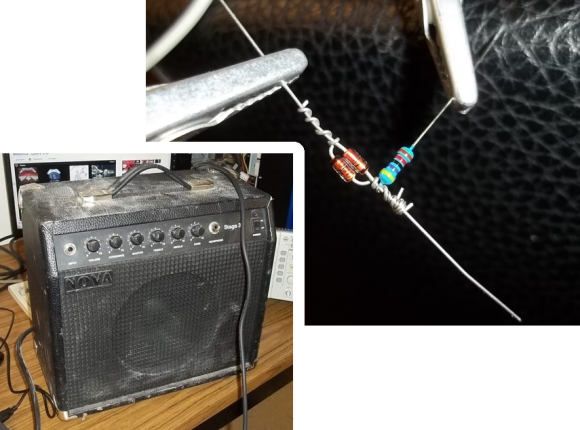
It’s an understatement that [Troy] is not impressed with the distortion circuitry built into this guitar amp. He picked it up for $40 on Kijiji (basically local classified ads run by eBay) so he wasn’t afraid to get elbow deep in its inner workings to see what was going on. It only took him a few minutes to solder together the distortion circuitry that fixed it. Figuring out what needed fixing is another story.
[Troy] uses some colorful language and metaphors to illustrate his disdain for the sound of the overdrive option. He hooked it up to an oscilloscope and his trained eye immediately tells him that it’s not working as it should. After studying the PCB and working out a schematic he reworked the circuit with this pair of diodes and a resistor. It still uses a bit of filtering on the board, but does away with all of the other cruft. What remains is a cheap amp, but one that actually functions.















Is kijiji not a thing elsewhere in the world?
I’m in Canada, and noone uses Craigslist here, It’s all Kijiji.
It is not much of a thing in the US. eBay has been keeping a very low profile with it since it was sued by craigslist (suit is still ongoing).
it’s pretty worthless here in the states… makes craigslist look good by comparison, which is no small feat.
It’s actually prohibited to post an ad on Kijiji Canada if you’re not actually located in Canada:
http://help.kijiji.net/ca/knowledgebase.php?article=22
Wasn’t the “BS” circuit he removed just a lowpass filter and some other filter?
http://audible.transient.net/archive/doc/curious-reversion.html
Only thing that distortion circuit is doing is amplifying the wave and then trimming at desired amplitude. The one I built for my first amp was made from: 2 diodes, 1 LM387, 3 transistors, and a 300k linear potentiometer. It was scratchy at low volume, but sounded wicked at high volume (almost like the distortion in a Mesa Boogie Dual Rectifier).